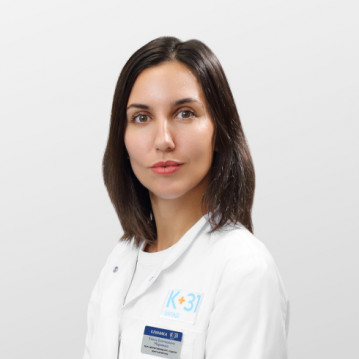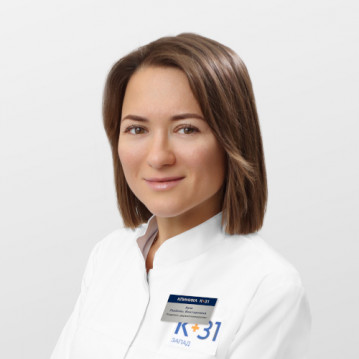Лечение онихолизиса
Onycholysis is a common type of onychodystrophy; it is characterized by a disruption of the connection between the plate and the bed, while the integrity of the latter is not violated. To visit a podologist at the K+31 clinic or consult with a specialist online, leave a request on this page.

specialists

equipment

treatment
Main symptoms

The first symptom of onycholysis is a change in the appearance and structure of the nail. It becomes duller and changes its natural color to white, yellow or gray. Gradually, the plate begins to separate from the nail bed, forming a space that is filled with air or liquid. Over time, nail peeling increases. In some cases, complete separation of the plate is observed.
Depending on the cause of the disease, additional symptoms are observed. For example, with a fungal infection, the nail thickens. A specific coating of unusual color forms under it. With dermatological problems, itchy redness of the skin around the nail may appear.
Causes

Injury is one of the most common causes of onycholysis. You can get damaged in the background:
- Unsuccessful manicure.
- Strong blow.
- Falls.
- Wearing tight shoes.
Onycholysis is closely related to onychomycosis – nail damage. The fungus causes changes in the structure of the plate. As a result, the nail begins to separate from the skin, and a void is created underneath it. Inappropriate care may also be a factor in the development of onycholysis. The disease develops against the background of frequent manicure procedures using aggressive substances, the use of low-quality varnish or nail polish remover, and wearing tight shoes.
Psoriasis, eczema, and atopic dermatitis also often provoke onycholysis. In addition, its appearance can be influenced by systemic diseases such as liver cirrhosis, anemia, or diabetes.
In some cases, onycholysis is a sign of serious diseases, including cancer. Neoplasms located in the nail bed area cause pressure on the plate and provoke its subsequent peeling.
Price

Appointment to the doctor










About the disease
Onycholysis is a pathological condition in which the nail plate separates from the bed. This disease causes not only aesthetic inconvenience, but also physical discomfort. It also serves as a risk factor for the development of secondary infections.
Onycholysis is not an independent pathology. It is often a symptom or consequence of dermatological problems and fungal infections.
Doctors distinguish traumatic onycholysis caused by mechanical damage and pathology caused by fungal or bacterial infections.
There is also dystrophic (is a manifestation of systemic diseases) and allergic onycholysis (occurs in response to contact with an allergen).